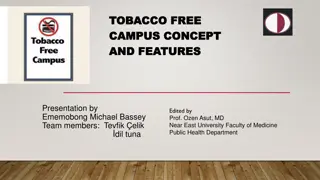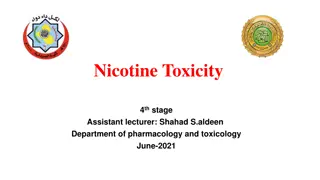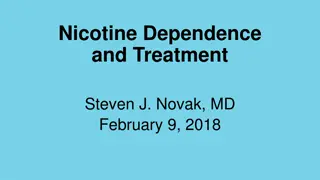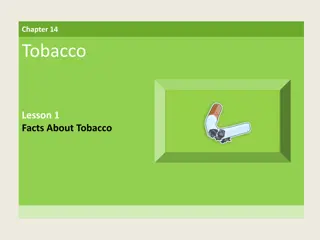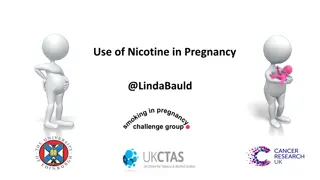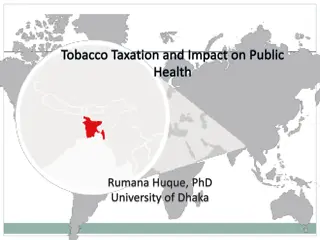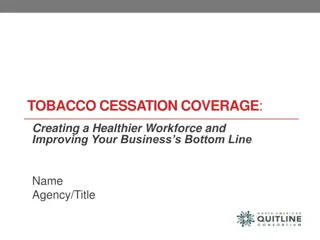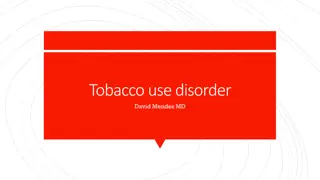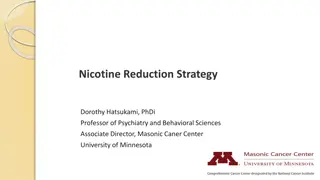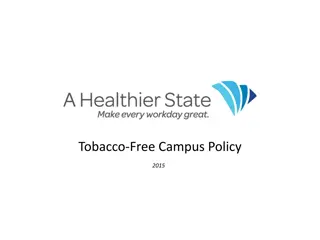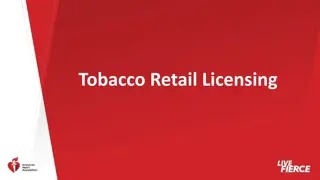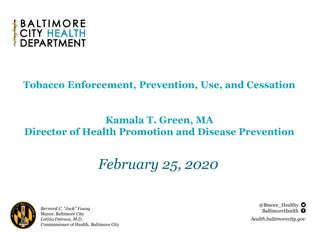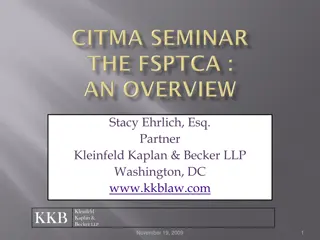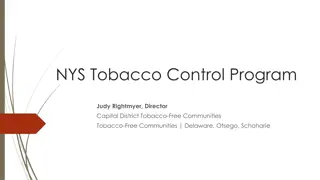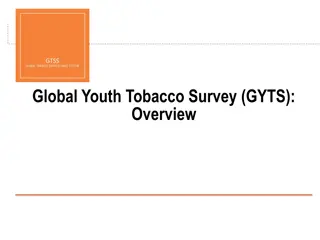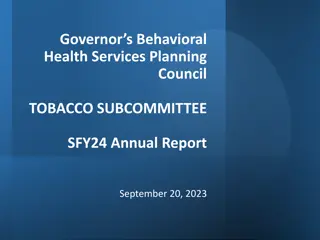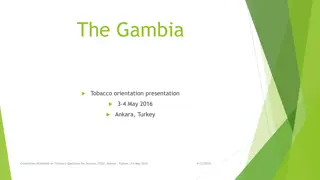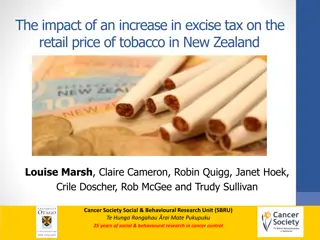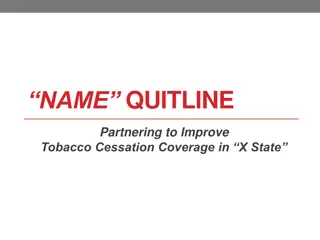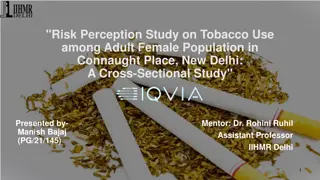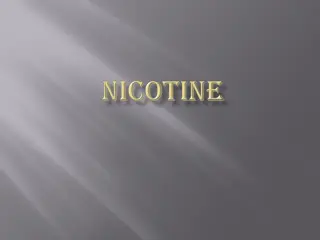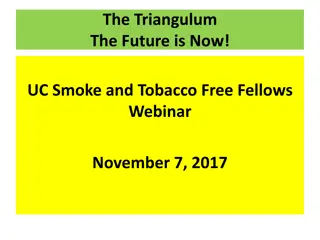Estonian Experience on Regulatory and Tax Policy in Tobacco and Nicotine Products
The Estonian experience on regulatory and tax policy in tobacco and nicotine products highlights the implementation of strategies such as e-liquid tax breaks and excise duty differentiation based on harm caused. The initiative aims to reduce the black market, make legal products more affordable, and incentivize the shift to less harmful alternatives. The outcomes show positive impacts on consumer behavior and market dynamics. Additionally, restrictions on flavored e-liquids are discussed, reflecting efforts to regulate product availability in the market.
Download Presentation

Please find below an Image/Link to download the presentation.
The content on the website is provided AS IS for your information and personal use only. It may not be sold, licensed, or shared on other websites without obtaining consent from the author. Download presentation by click this link. If you encounter any issues during the download, it is possible that the publisher has removed the file from their server.
E N D
Presentation Transcript
Estonian experience on regulatory and tax policy Ingmar Kurg NNA Smoke-Free Estonia
Topics Estonian E-liquids tax break Excise duty on safer tobacco and nicotine products Flavours of safer tobacco and nicotine products E-cigarette, tobacco-free snus and heated tobacco user survey 2021
E-liquid tax break In Estonia, the excise duty rate for e-liquids is 0,2 euros per milliliter. BUT, in the period 01.04.2021-31.12.2022, e-liquids are not subject to excise duty. WHY? Legal e-liquids were expensive in Estonia and users began to: buy e-liquids on the black market, mix e-liquids themselves, buy e-liquids from other countries, mainly from Latvia. According to various estimates, the black and grey market for e-liquids is accounted for 62-80% of the entire Estonian e-liquids market But why not simply reduce the rate of the excise duty? The Ministry of Finance said that the revenue wouldn t cover the costs of collecting tax
Outcomes of e-liquid tax break Consumers are certainly pleased that the prices of legal e-liquids are lower Activity in the black market for e-liquids has decreased It is cheaper and safer to buy legal e-liquids Secret social media groups selling e-liquids are not that active As the students were studying at home for a long time, the black market shrank. Unfortunately, we do not yet have national e-liquid sales numbers. As e-liquids are on excise duty break, the sales numbers are collected once a year not monthly. We will get an overview of e-liquid sales volumes at the beginning of next year.
Excise duty on tobacco and nicotine products We believe that excise duty rates on tobacco and nicotine products should depend on harm caused. Product Excise duty rate 2021 Excise duty rate 2022 Cigarettes 86,50 euros/1000 pcs + 30% from retail price 91,30 euros/1000 pcs + 30% from retail price min. 145,60 euros/1000 pcs min. 152,85 euros/1000 pcs The most harmful product would be subject to the highest rate of excise duty. Cigarillos 151 euros/1000 pcs + 10% from retail price min. 211 euros/1000 pcs The rate of excise duty on other products would depend on their harm compared to the most harmful product. Cigars 151 euros/1000 pcs + 10% from retail price min. 211 euros/1000 pcs Smoking tobacco 97,10 euros/kilogram 101,90 euros/kilogram Solid tobacco substitute 97,10 euros/kilogram 101,90 euros/kilogram This way we create an economic incentive for users to switch to a less harmful product. Other alternative product 0,2 euros/gram
Flavours -where there's a will there's a way In Estonia sales of flavoured nicotine-containing e-liquids are forbidden from 1 June 2019 (except tobacco flavour). The menthol exception was added 1 May 2020. The closest place to buy flavoured e-liquid that complies with EU Tobacco Directive is Latvia Where there's a will there's a way: New stores came on the market that focused on selling liquid food flavourings, E-cigarette stores began selling liquid flavourings.
Latvias plan: a total ban of all flavours!? Flavourings used in e-liquids are also used in food products which means that flavour ban will not be effective. Banning flavoured e-liquids will create a new business opportunity resulting in new flavouring stores soon opening in Latvia as well. What would Latvia like to achieve by banning flavoured e-liquids? Protect young people? As a result of such bans, young people in Estonia became black market dealers. If Latvia truly wants to protect young people, they should punish those who sell e- cigarettes and e-liquids to them. Do not deny your adult smokers access to less harmful products that comply with uniformly agreed rules in the European Union and help them quit smoking.
Estonias plan: a compromise on flavours Flavours in ready-made e-liquids in Estonia are currently limited to tobacco and menthol flavour. A draft law is pending before Parliament: the selection of flavored e-liquids will be extended, whilst flavours described as sweets, candies or soft drinks will remain prohibited.
User survey 2021 NNA Estonia conducted a survey among users of e-cigarettes, tobacco-free snus and heated tobacco. 603 people participated in the study. Most of them had already quit smoking and done so with a less harmful product. We asked people why they started using less harmful products, what their consumption habits are, and what they think about regulating these products. The English summary of the study is available on our website nna.ee/en
Thank you! Questions?


